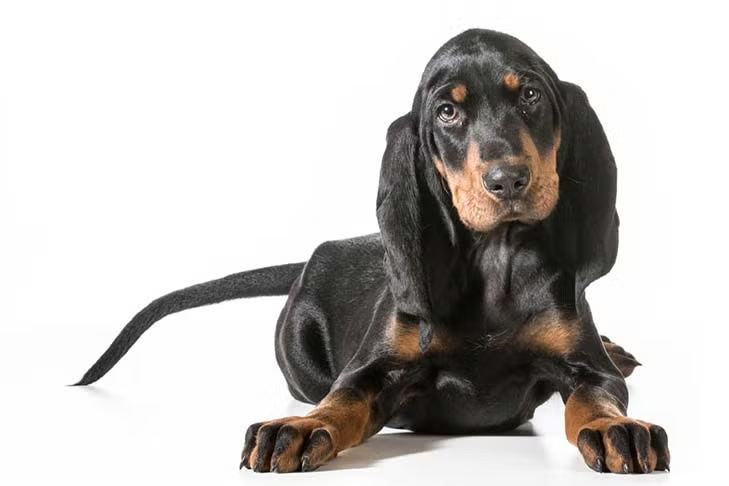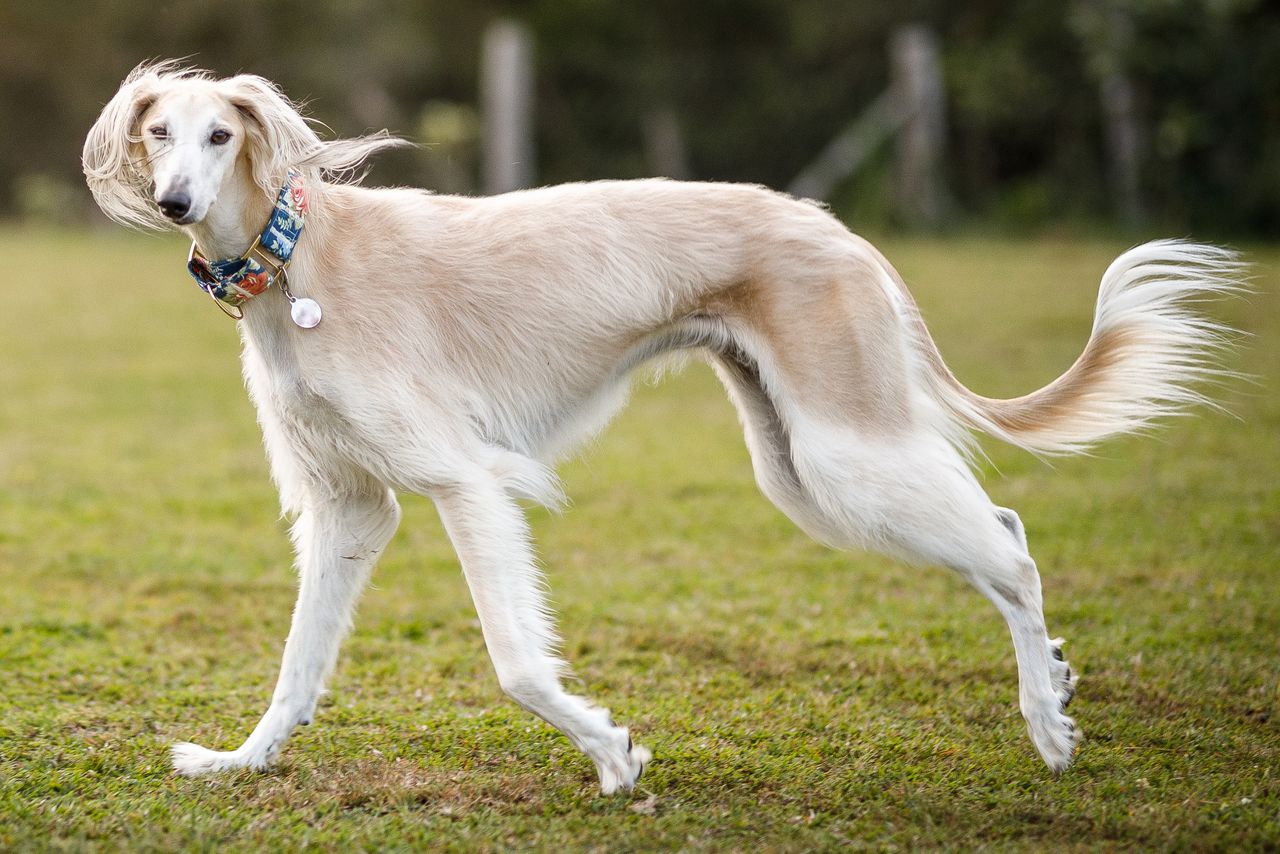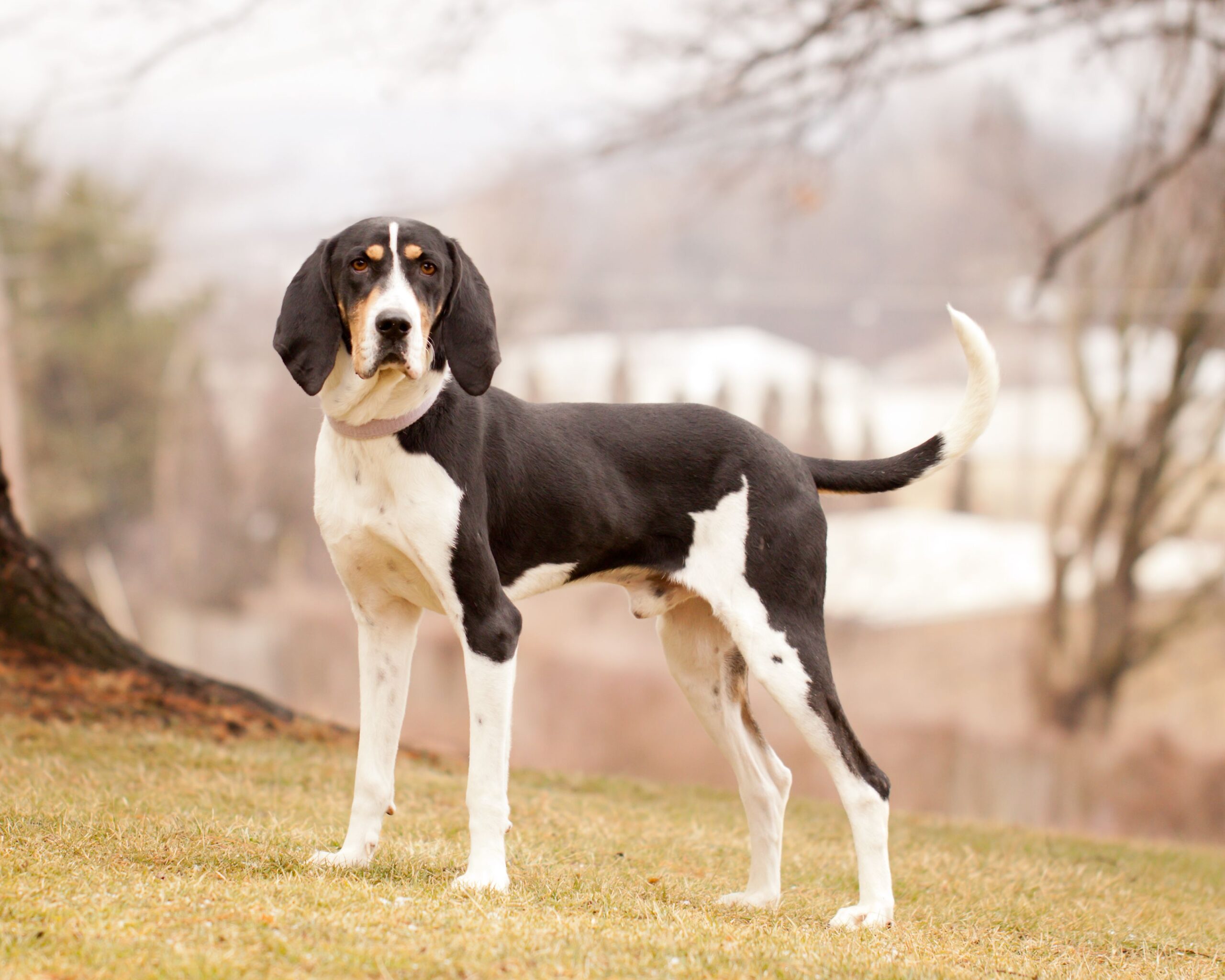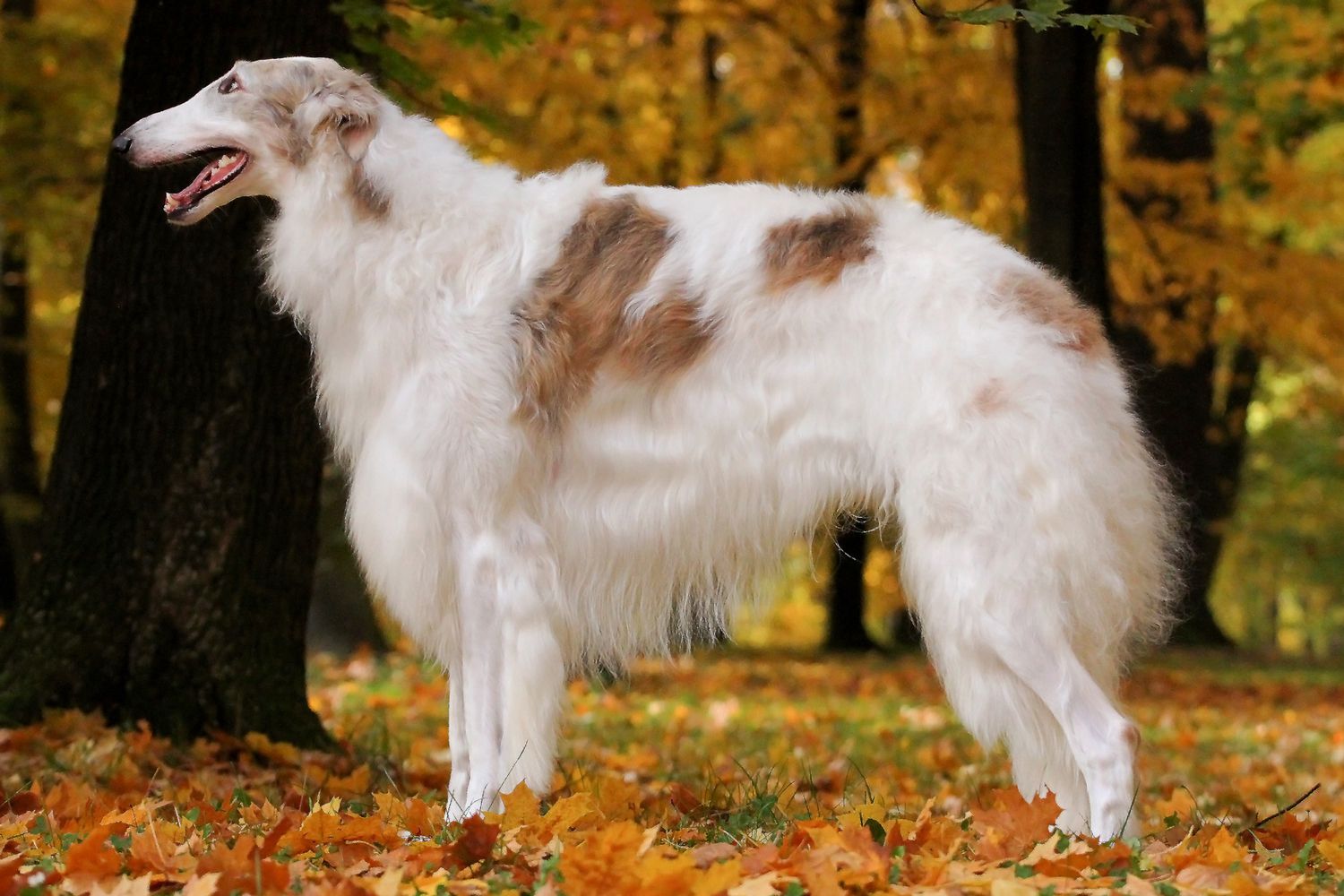Why I’m Obsessed With Black and Tan Coonhounds (And You Might Be Too)
The first time I saw a Black and Tan Coonhound in person, I was literally stopped in my tracks. There’s something so striking about their sleek black coat with those rich tan markings, those soulful eyes, and those velvety ears that seem to go on forever. But what really sold me was watching this magnificent creature put their legendary nose to work – following a scent trail through the woods with such focus and determination that everything else in the world seemed to disappear for them.
If you’ve ever been curious about these distinctly American hunting hounds, you’re in for a treat. Whether you’re considering adding one of these noble dogs to your family, are fascinated by their hunting abilities, or just love learning about different dog breeds, I’ve got you covered with this deep dive into all things Black and Tan Coonhound.
In this comprehensive guide, I’m breaking down everything from their fascinating history as America’s premier raccoon hunters to what they’re actually like as family companions (spoiler alert: they’re absolute sweethearts). We’ll explore their unique personalities, their specific care needs, training challenges and triumphs, and what it’s really like to share your home with one of these vocal, scent-driven hounds. So grab your favorite beverage, get comfy, and let’s explore the wonderful world of Black and Tan Coonhounds!
American Heritage: The History and Origins of the Black and Tan Coonhound
Before we get into the practical stuff about living with these dogs, let’s take a moment to appreciate where they came from. Understanding their history explains so much about what makes them tick!
Distinctly American Development
Unlike many popular breeds that were imported from Europe or Asia, the Black and Tan Coonhound is an all-American original. These dogs were developed in the southern United States, primarily in the Appalachian, Blue Ridge, and Ozark Mountains, where they were (and still are) prized for their ability to track and tree raccoons.
Their ancestry includes the English Foxhound and the Bloodhound, combining the stamina and pack-hunting abilities of the former with the superior scenting capabilities of the latter. American settlers needed versatile hunting dogs that could work in the unique terrain and climate of the New World, and through selective breeding, the Black and Tan Coonhound emerged as a specialist in trailing raccoons and other game through difficult, wooded terrain – often at night when raccoons are most active.
The breed was officially recognized by the American Kennel Club in 1945, making them one of the first distinctly American breeds to gain recognition. However, they had been a distinct type for much longer, with dedicated breeders working since the late 1700s to perfect their hunting abilities.
From Hunting Hounds to Modern Companions
While Black and Tan Coonhounds were developed strictly as working dogs, today many serve as beloved family pets as well as hunters. They continue to excel in their traditional role – competitive coon hunting remains popular in many parts of rural America, with top hunting hounds commanding impressive prices.
Beyond raccoon hunting, these versatile dogs have proven their worth in search and rescue operations, thanks to their exceptional scent-tracking abilities. Their sensitive noses and determination make them excellent at finding missing persons, particularly in wooded or rural terrain.
Despite their growing popularity as companion animals, it’s important to remember that the Black and Tan Coonhound is first and foremost a hunter. Nearly everything about them – from their deep, melodious bay to their independent nature – is connected to their hunting heritage.
The Black and Tan Look: Distinctive Features and Physical Characteristics
Black and Tan Coonhounds are stunning dogs with a distinctive appearance that perfectly matches their hunting prowess. Let’s break down their physical characteristics and what makes them so recognizable.
Build, Size, and Overall Appearance
Black and Tan Coonhounds are substantial hunting dogs, built for stamina and rough terrain rather than speed. Males typically stand 25-27 inches at the shoulder and weigh 50-75 pounds, while females are slightly smaller at 23-25 inches and 40-65 pounds. They have an athletic, well-muscled build that’s neither too heavy nor too refined.
Their most distinctive features include:
- A long, slightly domed head with a square, deep muzzle
- Long, low-set ears that hang in graceful folds, extending past the tip of the nose when pulled forward
- Deep-set eyes with a pleading, soulful expression – typically dark brown or hazel
- A deep chest and straight, strong back
- A tail carried high with a slight curve (their “flag” when on a scent trail)
- Clean, powerful legs built for covering ground tirelessly
Their overall appearance combines nobility with athleticism – these are working dogs whose form perfectly follows their function as endurance hunters.
That Gorgeous Coat: Colors and Maintenance
As their name suggests, Black and Tan Coonhounds have a rich black coat with distinctive tan markings in specific patterns. The tan points appear:
- Above each eye (the “pumpkin seeds” or eyebrows)
- On the sides of the muzzle
- On the chest and legs
- At the underside of the ears
- Around the vent area
Their coat is short, dense, and slightly coarse to the touch – designed to protect them from briars, brush, and harsh weather while hunting. It typically has a natural sheen that gives them a sleek, glossy appearance when healthy.
One of the nice things about Black and Tans is their relatively simple grooming needs. Their short coat requires minimal maintenance – weekly brushing with a rubber curry brush or grooming mitt will remove loose hair and distribute skin oils. They do shed moderately year-round with seasonal heavy shedding in spring and fall.
Those magnificent ears need regular attention to prevent infection, as their length limits airflow. Weekly cleaning with a veterinarian-approved ear cleaner helps prevent problems. Some owners also find it helpful to gently tape or fold the ears back during mealtimes to keep them clean.
Bathing is needed only when they’re dirty or begin to develop “hound odor” – typically every 4-6 weeks for a house dog. More frequent bathing can strip the natural oils from their coat.
Personality & Temperament: What Makes Black and Tan Coonhounds Tick
Now for the fun part – what are these gorgeous dogs actually like to live with? Their personalities are as distinctive as their looks, and understanding their temperament is key to a successful relationship with a Black and Tan.
The Classic Hound Personality: Independent Yet Affectionate
If I had to sum up the Black and Tan Coonhound personality in three words, they would be: independent, affectionate, and determined. These dogs are true hounds through and through, with all the delightful quirks that entails.
Unlike breeds that were developed to work in constant communication with humans (like herding or retrieving breeds), coonhounds were bred to work somewhat independently. They needed to make decisions on their own while tracking, often at night and in difficult terrain. This independent streak remains strong in modern Black and Tans – they’re not typically “velcro dogs” that need constant direction.
That said, they form deep bonds with their people and can be surprisingly affectionate and even snuggly at home. Many Black and Tan owners report that their dignified hunting dogs transform into big babies who insist on sharing the couch (or bed!) with their human family members. They typically get along well with children, showing patience and gentleness with them.
Their determination – some might call it stubbornness – is legendary. Once a Black and Tan gets on a scent trail, they can be remarkably single-minded. This focus served them well as hunters but can present challenges in a pet setting. Many owners joke that their coonhound’s selective hearing is most selective when they’ve found something interesting to smell!
Social Needs and Pack Mentality
Black and Tan Coonhounds are historically pack dogs, bred to hunt alongside other hounds. This heritage makes them generally good with other dogs and well-suited to multi-dog households. Many actually thrive with canine companions who can help burn off energy and provide social interaction.
They typically do well with children and can be very tolerant of the noise and activity that comes with family life. With proper socialization, they can also live peacefully with cats, though their prey drive might make them inappropriate for homes with smaller pets like rabbits or guinea pigs.
One thing that sometimes surprises people about Black and Tans is their tendency toward shyness or reservation with strangers. Despite their imposing appearance, they’re not typically assertive or protective dogs. Early and ongoing socialization is important to help them develop confidence in new situations and with unfamiliar people.
That Legendary Voice
We can’t talk about Black and Tan Coonhound personality without mentioning their voice! These dogs are vocal – it’s part of their hunting style to “give voice” when on a scent trail and to bay melodiously when they’ve treed their quarry. This beautiful, deep, musical howl is part of their charm for enthusiasts but can be problematic in suburban neighborhoods.
Inside the home, they’re generally quiet unless they have something to say. But outside, particularly if they catch an interesting scent or see wildlife, all bets are off. Their bay can carry for miles, and they seem genuinely proud of their vocal talents! Training can help manage excessive vocalization, but it’s important to understand that some baying is simply part of who they are.
The Incredible Nose: Understanding Their Tracking Abilities
The Black and Tan Coonhound’s most remarkable feature isn’t visible to the eye – it’s their extraordinary sense of smell. Let’s explore what makes their scenting ability so special and how it impacts life with these dogs.
The Science Behind the Sniff
Like all scent hounds, Black and Tans have a significantly more developed olfactory system than humans. While the human nose contains about 5-6 million scent receptors, a coonhound’s nose packs an estimated 220 million receptors! Their brain’s olfactory bulb (the part that processes scent information) is also proportionally much larger than ours.
This gives them the ability to detect scents at concentrations up to 100 million times lower than what humans can perceive. They can follow scent trails that are days old and distinguish between incredibly similar scents. When a Black and Tan Coonhound appears to be “just sniffing around,” they’re actually processing a complex world of information completely inaccessible to us.
Their physical features enhance this natural ability. Those long, pendulous ears actually serve a purpose – they help stir up scent particles from the ground as the dog moves. The loose skin around their neck can trap scent particles, and their moist, spongy noses efficiently capture scent molecules from the air.
Cold-Nosed Tracking in the Real World
Black and Tan Coonhounds are what hunters call “cold-nosed” trackers, meaning they can follow old scent trails long after the animal has passed through. In contrast, “hot-nosed” hounds (like Bluetick Coonhounds) excel at following fresher trails.
When tracking, a Black and Tan will put their nose to the ground and methodically follow the exact path their quarry took. They’re renowned for their ability to stay on track despite distractions, including crossing scents from other animals. Traditionally, they were used to track raccoons, but they can be trained to track virtually any animal – or human.
This remarkable ability makes them excellent search and rescue dogs, particularly in wilderness settings. Their stamina and determination combined with their scenting ability allows them to work for hours in difficult terrain.
For pet owners, this incredible nose means that walks will frequently turn into sniffing expeditions, and secure fencing is absolutely essential. Once they catch an interesting scent, their recall reliability can drop dramatically as their instincts take over.
Health Considerations: Keeping Your Black and Tan in Top Form
Like all purebred dogs, Black and Tan Coonhounds have certain health conditions they’re predisposed to. Understanding these can help you provide the best care and potentially extend your time with these wonderful companions.
Common Health Issues to Watch For
While generally robust working dogs, Black and Tans can be prone to certain conditions:
- Hip Dysplasia: This developmental condition affects the hip joint and can lead to arthritis and mobility issues.
- Ear Infections: Those beautiful long ears are prone to infections due to poor air circulation.
- Bloat (Gastric Dilatation-Volvulus): This life-threatening condition occurs when the stomach fills with gas and twists on itself. Large, deep-chested breeds are particularly susceptible.
- Eye Issues: Several eye conditions can affect the breed, including cataracts and progressive retinal atrophy (PRA).
- Thyroid Issues: Hypothyroidism is not uncommon in the breed.
- Cancer: Like many larger breeds, they can be prone to certain types of cancer, particularly in their senior years.
Working with a reputable breeder who conducts health testing on their breeding stock can reduce the risk of inherited conditions. Regular veterinary check-ups are essential for catching and addressing health issues early.
Lifespan and Aging Considerations
The average lifespan of a Black and Tan Coonhound is about 10-12 years. While not as long-lived as some smaller breeds, many remain active and healthy well into their senior years with proper care.
As they age, Black and Tans may develop arthritis, particularly if they’ve had hip issues earlier in life. Weight management becomes even more critical for older dogs to reduce strain on their joints. Many owners find that joint supplements (given under veterinary guidance) help maintain mobility as their coonhounds age.
Senior Black and Tans typically become more settled and less driven to follow every interesting scent, often making them even more enjoyable as house pets in their golden years.
Daily Life with a Black and Tan Coonhound: The Realities of Hound Ownership
So what’s it actually like to live with a Black and Tan Coonhound? Let’s get into the day-to-day aspects of life with these distinctive dogs.
Exercise Requirements: Meeting Their Physical Needs
Black and Tan Coonhounds were bred for stamina, with the ability to hunt through the night and cover many miles of rough terrain. While pet coonhounds don’t need quite that level of activity, they do require substantial regular exercise to stay physically and mentally healthy.
A minimum of 1-2 hours of exercise daily is appropriate for most adult Black and Tans. This can be a combination of:
- Leashed walks (essential, as most coonhounds cannot be trusted off-leash)
- Play sessions in a securely fenced yard
- Hiking (on leash)
- Supervised swimming (many, though not all, coonhounds enjoy water)
- Structured activities like tracking, nosework, or even lure coursing
Speaking of fencing – it cannot be emphasized enough that secure containment is absolutely essential for these dogs. A Black and Tan who catches an interesting scent can clear a 4-foot fence with ease or dig under barriers with impressive determination. Many coonhound owners invest in 6-foot privacy fences with dig guards to keep their scent-driven friends safe.
It’s worth noting that many Black and Tans have two speeds: full-on tracking mode and complete couch potato. After sufficient exercise, they’re typically very content to lounge around the house, often claiming the most comfortable spots on your furniture!
Feeding Your Black and Tan: Nutrition for Working Dogs
Black and Tan Coonhounds generally do well on high-quality commercial dog foods formulated for large, active breeds. The amount will vary based on age, activity level, and metabolism – working hunting dogs may need significantly more calories than companion dogs.
Many coonhounds have hearty appetites and can become overweight if allowed free access to food. Measured meals (typically twice daily for adults) help maintain a healthy weight. You should be able to feel (but not see) your dog’s ribs, and they should have a visible waist when viewed from above.
For working coonhounds or very active pets, performance dog foods with higher protein and fat content may be appropriate. As always, your veterinarian can provide specific nutritional recommendations based on your individual dog’s needs.
To help prevent bloat, many veterinarians recommend:
- Feeding multiple smaller meals rather than one large one
- Avoiding exercise for at least an hour before and after meals
- Using slow-feeder bowls for dogs who gulp their food
Training Your Black and Tan: Working With Their Nature
Training a Black and Tan Coonhound can be both rewarding and challenging. Their independent nature and scent-driven focus require specific approaches for success.
Understanding the Coonhound Mind
Before diving into training techniques, it helps to understand how coonhounds think. These dogs were bred to work without constant human guidance, often at night and over long distances. This created a dog that can problem-solve independently but doesn’t necessarily look to humans for constant direction.
Additionally, their incredible focus on scent means that olfactory input often takes precedence over visual or auditory cues (like your commands!). This doesn’t mean they’re unintelligent – quite the opposite. They simply process the world differently than breeds developed for different purposes.
Effective Training Approaches
Given their unique mindset, here are some training strategies that work particularly well with Black and Tan Coonhounds:
- Start early: Begin training and socialization when they’re puppies and more receptive to new experiences.
- Use positive reinforcement: Coonhounds respond much better to rewards than corrections. Find what motivates your individual dog – food rewards work for many, but some may respond better to play or praise.
- Keep sessions short and engaging: Coonhounds can become bored with repetitive training. 5-10 minute sessions several times a day are more effective than one long session.
- Be consistent and patient: Training a coonhound typically takes longer than training more biddable breeds. Consistency is key, as is patience with their learning curve.
- Minimize distractions initially: Begin training in a low-distraction environment before expecting compliance in more stimulating settings.
- Channel natural instincts: Rather than fighting against their tracking instincts, provide appropriate outlets through activities like nosework or tracking trials.
Special Training Challenges
Some aspects of training deserve special attention with Black and Tan Coonhounds:
Recall (coming when called) is particularly challenging with this breed. Their instinct to follow scent trails can override their response to commands. For safety, most experienced coonhound owners never allow their dogs off-leash in unsecured areas, regardless of how well-trained they seem. For those determined to improve recall, long-line training and high-value rewards can help, but expectations should remain realistic.
Leash manners also require focused attention. With their strong tracking instincts, Black and Tans naturally want to pull toward interesting scents. Starting leash training early with appropriate equipment (many owners find front-clip harnesses helpful) can make walks more enjoyable for everyone.
Excessive baying can be managed to some extent through training, though it’s important to understand that vocalization is an inherent trait in the breed. Teaching a “quiet” command with consistent reinforcement can help, but don’t expect a completely silent coonhound!
Is a Black and Tan Coonhound Right for You? Honest Assessment
After learning all about these distinctive dogs, you might be wondering if a Black and Tan Coonhound would fit well in your lifestyle. Let’s take an honest look at who should (and perhaps shouldn’t) consider this breed.
You Might Be a Great Black and Tan Owner If…
A Black and Tan Coonhound might be right for you if:
- You appreciate a dog with character and don’t expect perfect obedience
- You enjoy spending time outdoors and can provide daily exercise
- You have a securely fenced yard or reliable access to safe exercise areas
- You don’t mind some baying and howling
- You have patience for training a dog with an independent streak
- You appreciate their hunting heritage and natural instincts
- You have space for a large dog who might claim your couch
- You’re interested in activities that utilize their amazing nose, like tracking or nosework
Black and Tans can adapt well to family life and generally do well with children, especially if raised with them. They can also do well with other dogs, often benefiting from canine companionship.
A Different Breed Might Be Better If…
A Black and Tan Coonhound might not be the best choice if:
- You live in an apartment or area with strict noise ordinances (their baying can be problematic)
- You want a dog that’s easy to train with high reliability off-leash
- You’re extremely house-proud (they do shed, and sometimes drool)
- You can’t provide adequate daily exercise
- You’re away from home for long periods regularly
- You want a guard dog (they’re typically friendly to everyone)
- You have small pets like rabbits or guinea pigs (strong prey drive)
Finding Your Black and Tan: Adoption vs. Breeder
If you decide a Black and Tan Coonhound is right for you, consider both adoption and reputable breeders:
Coonhound-specific rescues exist throughout the country and often have wonderful dogs needing homes. Many coonhounds end up in shelters because owners underestimated their exercise needs or couldn’t accommodate their vocalization. Adoption typically costs $100-$300 and often includes initial veterinary care.
If purchasing from a breeder, research extensively to find one who prioritizes health and temperament. Reputable breeders conduct health testing on breeding stock, provide proper socialization for puppies, and offer lifetime support to puppy buyers. Expect to pay $800-$1,500 for a well-bred Black and Tan Coonhound puppy.
The American Black and Tan Coonhound Association (the breed’s national parent club) can be a good resource for finding reputable breeders or rescue organizations.
Conclusion: America’s Melodious Trackers
There’s something undeniably special about Black and Tan Coonhounds. From their stunning appearance and melodious bay to their extraordinary scenting abilities and sweet temperament, these dogs represent an important piece of American canine heritage.
Living with a Black and Tan certainly comes with unique challenges – the need for secure fencing, their impressive vocalization, and that independent streak that can make training interesting. But for those who appreciate them for exactly who they are, these challenges are far outweighed by the joy of sharing life with such a noble, affectionate, and capable companion.
Whether lounging on your couch with those velvety ears spread across your lap or following a scent trail with unwavering determination, Black and Tan Coonhounds bring a special energy to the lives of those lucky enough to know them. They remind us of our country’s rich hunting traditions while adapting to modern life as beloved family members.
If you decide to welcome one of these beautiful hounds into your home, prepare for an adventure filled with melodious howls, impressive tracking demonstrations, and deep affection from a dog who loves with their whole heart while maintaining their dignified independence. It’s a unique journey – and for the right person, an incredibly rewarding one.




